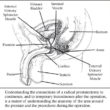Adoption of new tests to assess the risk for prostate cancer progression in different U.S. regions
There is an urgent need for less-invasive methods than the currently recommended repeated surveillance biopsy procedures in patients whose diagnostic biopsy suggests that they have low-risk prostate cancer that could be managed with active surveillance. However, the bar is high for these methods that must reliably measure the risk for cancer progression and delay needed treatment.

Researchers from Yale University evaluated the association between the uptake of prostate MRI scans and genomic tests with the adoption of observation versus treatment as the initial management strategy in different regions of the U.S. in more than 65,000 men in two different periods (2012-14 and 2017-19).
The percentage of patients managed with observation increased from 26.4% to 35.4% between the earlier and later periods. The use of MRI increased from 7.2% to 16.7% and genomic testing increased from 1.3% to 12.7%. The uptake of prostate MRI and genomic testing surrounding a prostate cancer diagnosis varied considerably across regional healthcare marketplaces as did the magnitude of change. Among the patients who underwent MRI scans, there was a 4.1% increase in those receiving observation and among those who underwent genomic testing, there was a 2.5% increase.
In summary, in this cohort study, uptake of prostate MRI and genomic testing was associated with increased use of the initial observation versus treatment for prostate cancer. Marked geographic variation supports the need for further patient-level research to optimize the dissemination and outcome of testing.
In summary, to date, neither prostate MRI scans nor genomic testing alone nor together is an adequate substitute for surveillance biopsies. Further research is needed to integrate and optimize MRI and genomic testing into clinical practice. In this regard, the PCASP grant proposal from Dr. Catalona and his collaborators currently under review at the National Cancer Institute proposes such research (See article on page 5).
JAMA Network Open. 2021; 4(10):e2128646. Doi:10.1001/Jamanetworkopen.2021.28646




















